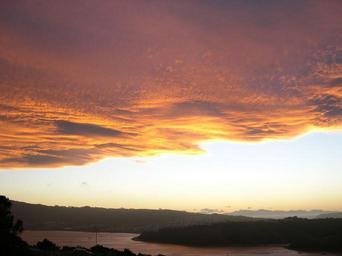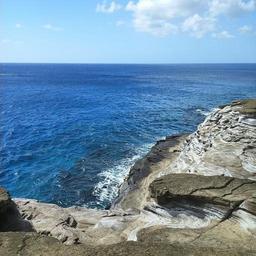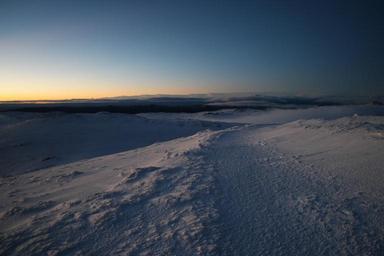Introduction
Tunnel photography represents a unique intersection of light, shadow, and architectural forms. It delves into the liminal world in photography, capturing moments between reality and abstraction. Photographers are drawn to tunnels for their structural beauty and the atmospheric conditions they create—where murky tones and earthy hues converge. This article will explore the multifaceted dimensions of tunnel photography, examining its techniques, thematic implications, and emotional resonance.
The Architectural Poetry of Tunnel Photography
In photography, tunnels serve as captivating subjects that evoke mystery and exploration. They symbolize transitions—spaces where one moves from one environment to another. The architectural poetry of tunnel photography is deeply intertwined with the feelings it evokes: introspection, solitude, and a sense of journey. Tunnels can embody an enigmatic figure in photography, inviting viewers to ponder what lies beyond their dark walls.
Through thoughtful composition and attention to detail, photographers can transform these transitional spaces into extraordinary visual narratives. With each shutter click, they capture fleeting moments that resonate with deeper meanings—a reflection on existence or a glimpse into unseen worlds.
Exploring Liminal Spaces in Tunnel Photography
Liminal spaces are those thresholds that exist between two states or places. In tunnel photography, this concept manifests powerfully through light and shadow.
Understanding Liminality
- Definition: A liminal space is often described as an in-between realm that elicits feelings of uncertainty or transformation. Application: In tunnel photography, this translates to visuals that invite contemplation about one's journey—both literally and metaphorically.
Photographers often strive to capture this essence by focusing on elements such as light patterns breaking through darkness or reflections in puddles on wet ground—creating an atmosphere rich with evocative textures.
Visual Techniques to Capture Liminality
Backlighting: Utilizing natural light sources behind subjects can bring out silhouettes against the tunnel's architecture. Shadow Play: Incorporating shadowy reflections adds depth and complexity to photographs. Wet Textures: After rain or during damp conditions, surfaces become reflective and suggestive of deeper emotions.The Role of Self-Portraiture in Tunnels
Self-portraits taken in tunnels add a personal dimension to the architectural poetry being explored.

Capturing Introspection
- Photographers often use their own figures within these spaces to illustrate personal narratives. A solitary figure captured amid dark walls can evoke feelings of isolation while simultaneously emphasizing one's journey through life.
Character in Shadow
Using shadows creatively can enhance the storytelling aspect:
- A long coat flowing behind a subject can suggest movement and mystery. The contrast between bright subjects against muted backgrounds creates a cinematic feel.
Embracing Murky Tones & Earthly Hues
Photographers gravitate toward specific color palettes when working within tunnels—often leaning into murky tones and earthy hues.
Creating Mood Through Color
The choice of color profoundly influences mood:
- Murky tones convey melancholy or nostalgia. Earthly hues evoke warmth and grounding sensations.
These palettes allow photographers to tap into emotional resonances that transcend mere aesthetics; they tell stories steeped in mystery and forgotten spaces.
The Mystique Behind Round Tunnels
Round tunnels possess unique visual dynamics compared to traditional rectangular shapes.
Circular Composition Techniques
Focal Points: Utilizing circular symmetry draws viewers' eyes inward toward points of interest. Surreal Scenes: The curvature can create an otherworldly effect that heightens the surreal ambiance prevalent in tunnel environments.Rare Locations: Discovering Forgotten Spaces
Many photographers seek out rare locations for their projects; hidden tunnels often represent urban decay or forgotten histories.
Urban Decay as Art
- Urban decay refers to deteriorating structures within cities; these sites often carry rich histories waiting to be uncovered through visual storytelling. Photographers harness this aesthetic quality by capturing the haunting beauty present within aged surfaces, moss-covered bricks, or rusting metal conduits.
Creating an Ethereal Atmosphere with Light
Light is one of the most pivotal components in tunnel photography.
Techniques for Atmospheric Portraits
Fleeting Light: Capturing moments when light filters through openings creates ethereal effects. Twilight Tones: Shooting during dusk enhances soft shadows while retaining some ambient lighting for moodiness.Reflective Puddles: Unseen Worlds Beneath Our Feet
Puddles offer yet another layer for exploration within tunnel photography.
Harnessing Wet Ground for Visual Depth
The interplay between wet surfaces and reflections can create mesmerizing compositions:
- Reflective puddles act like mirrors reflecting not only physical elements but also emotional states.
FAQs
Q1: What makes tunnel photography unique?
A1: Tunnel photography uniquely captures transitional spaces that evoke feelings of mystery and introspection through architectural forms combined with atmospheric effects like light and shadow play.
Q2: How do I incorporate self-portraiture into tunnel photos?
A2: You can use your presence against dark walls or reflective surfaces while experimenting with angles that emphasize your character amidst those surroundings.
Q3: What types of lighting work best for this style?

Q4: Are there specific color schemes I should focus on?
A4: Yes! Murky tones combined with earthly hues create emotions tied closely to nostalgia or melancholy which resonate deeply within such settings!
Q5: How do I find rare locations suitable for shooting?
A5: Research urban https://telegra.ph/Embracing-Vulnerability-in-Faceless-Self-Portraits-04-16 areas known for historical significance; visiting old industrial sites may yield excellent opportunities!
Q6: What themes are prevalent in tunnel photography?
A6: Common themes include exploration between worlds (figurative), existential reflection on life journeys (literal), urban decay showcasing forgotten spaces (historical), etc., all tied together by moody aesthetics!
Conclusion
“The Architectural Poetry of Tunnel Photography” encapsulates a profound exploration into architecture's emotional landscapes through various lenses—from self-representation amidst hidden journeys—to capturing fleeting moments imbued with deep meaning. By leveraging techniques around lighting, texture interplay—and conscious choices regarding color palettes—photographers breathe life into these murky yet beautiful environments filled with untold stories waiting patiently beneath our feet!
